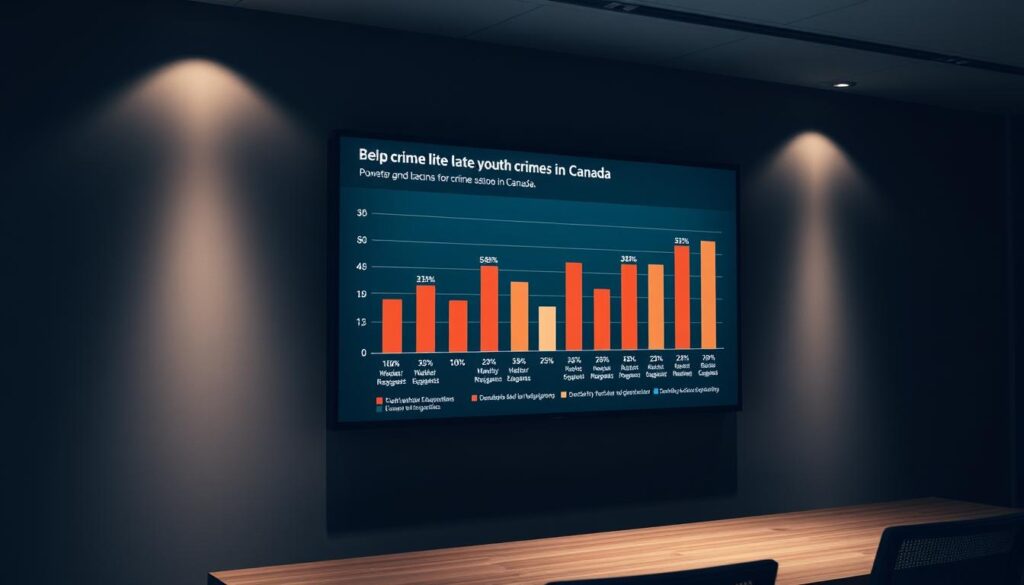Table of Contents
Understanding the Youth Criminal Justice System in Canada
Canada’s approach to youth crime is built on the principle that young people are different from adults in terms of development, decision-making, and rehabilitation potential. The Youth Criminal Justice Act (YCJA) governs how youth between the ages of 12 and 17 are treated in the criminal justice system. Children under 12 cannot be charged with crimes.
Instead of focusing solely on punishment, the system prioritizes accountability, rehabilitation, and reintegration. This means that consequences for youth are designed not only to address the offence but also to promote positive change and reduce the risk of future offending.
1. The Purpose of the YCJA
The YCJA reflects Canada’s belief that young people should be given the opportunity to learn from their mistakes. Its core goals include:
- Holding youth accountable through meaningful but fair consequences.
- Promoting rehabilitation and reintegration into society.
- Ensuring that custody is a last resort and used only in serious cases.
- Protecting the privacy of youth by limiting public access to their records and court proceedings.

2. Historical Development of Youth Justice in Canada
Canada’s youth justice system has undergone significant change over the last century:
- 1908 – Juvenile Delinquents Act: Treated youth as “misguided children,” with an emphasis on moral guidance rather than legal rights.
- 1984 – Young Offenders Act: Introduced clearer legal protections but often resulted in higher custody rates.
- 2003 – Youth Criminal Justice Act: Marked a turning point toward rehabilitation and restorative justice, reducing the number of youth in custody for non-violent offences.
This evolution shows a shift from viewing youth as subjects of moral correction to recognizing their legal rights and developmental differences.
3. Statistical Trends in Youth Crime
According to data from Statistics Canada, youth crime rates have declined significantly over the last two decades. Between 1998 and 2020, the overall youth crime rate dropped by more than half.
At the same time, some emerging trends present new challenges:
- Property crimes have generally declined, but cyber-related offences (such as online fraud or harassment) have increased.
- Case processing times in youth courts have lengthened, creating stress for both youth and families.
- Indigenous youth remain overrepresented in the justice system, underscoring the importance of culturally responsive approaches.

4. Key Differences Between Youth and Adult Proceedings
Unlike adults, young people benefit from unique protections in the justice system:
- Privacy: Publication bans restrict media from identifying youth.
- Parental involvement: Parents or guardians are usually notified and may be required to attend court.
- Sentencing flexibility: Judges consider the young person’s maturity, background, and prospects for rehabilitation.
- Record sealing: Youth records are generally sealed after specific access periods, provided no further offences occur.
5. Sentencing Options for Youth
The YCJA provides judges with a wide range of sentencing options. These can include:
- Extrajudicial measures (police cautions, community programs).
- Probation with conditions (such as curfews, counseling, or school attendance).
- Community service or restitution to repair harm done to victims.
- Custody and supervision orders in more serious cases, often followed by reintegration planning.
Custody is considered a last resort, reflecting the belief that most young people benefit more from community-based supports than incarceration.

6. Influences on Youth Behaviour
Research highlights several factors that may contribute to youth offending:
- Family dynamics: Instability, conflict, or lack of supervision can increase risks.
- Socio-economic challenges: Poverty and limited access to recreational or educational resources may push youth toward crime.
- Mental health and peer influence: Anxiety, depression, and substance use often intersect with offending behaviour.
Addressing these root causes is often more effective than punishment in preventing re-offending.
7. Indigenous Youth and Gladue Principles
Indigenous youth are significantly overrepresented in Canada’s criminal justice system. Courts must apply Gladue principles, which require judges to consider the unique circumstances of Indigenous offenders, such as the impacts of colonization, intergenerational trauma, and systemic barriers.
This may lead to sentencing approaches that prioritize community-based, culturally appropriate solutions over conventional penalties.
8. Community-Based Prevention and Rehabilitation
Prevention programs and rehabilitative strategies are essential in supporting youth. Examples include:
- Restorative justice circles, where youth meet with victims and community members to repair harm.
- Mentorship and skills training, which build self-confidence and reduce reliance on negative peer groups.
- Mental health partnerships, ensuring young people receive treatment and support for underlying issues.
Communities that invest in these strategies often see better long-term outcomes for both youth and public safety.

9. Why Early Legal Representation Matters
Facing a criminal charge is overwhelming for both youth and their families. Early legal advice can:
- Ensure that the youth’s rights are protected at every stage.
- Explore alternatives to formal charges or custody.
- Advocate for rehabilitative sentencing plans tailored to the individual.
- Provide guidance on how youth records are managed and when they may be sealed.
At Sohi Law Group, our team has over 15 years of experience assisting young people and their families in navigating the youth justice system. We focus on practical, compassionate advocacy that protects both immediate rights and future opportunities.
Frequently Asked Questions (FAQ)
Q1: At what age can minors face criminal charges in Canada?
The YCJA applies to youth aged 12–17. Children under 12 cannot be charged.
Q2: Do youth records disappear at 18?
Youth records are subject to access periods that depend on the offence and outcome. Some are sealed after a year; others remain accessible for longer.
Q3: Can a youth receive an adult sentence?
Yes, but only for the most serious offences, and only if the Crown applies for it. Courts must consider whether an adult sentence is appropriate given the youth’s circumstances.
Q4: Are youth trials open to the public?
Most youth court proceedings are closed, and identifying information about the youth cannot be published.
Q5: What alternatives to custody exist?
The YCJA emphasizes extrajudicial measures like cautions, community programs, restitution, or restorative justice, especially for first-time or non-violent offences.
Q6: How does the justice system address mental health issues?
Judges can order assessments and include treatment as part of a sentence. Accessing mental health services early can be critical to long-term outcomes.
Q7: How are Indigenous youth treated in the system?
Courts must apply Gladue principles, considering systemic and cultural factors, and may order community-based alternatives where appropriate.
Q8: Should my child have a lawyer even for a first offence?
Yes. Legal representation ensures the youth understands the process, their rights are protected, and all possible alternatives are explored.

How Sohi Law Group Can Help
We understand how stressful youth criminal charges are for families. Our lawyers provide:
- Early case assessments to identify diversion opportunities.
- Rehabilitation-focused sentencing advocacy.
- Guidance on record management to reduce long-term consequences.
Families can reach us at 833-877-9797 for a consultation.
Disclaimer
This blog is for general information only and does not constitute legal advice. Each case is different, and past outcomes do not guarantee future results. For legal advice about your situation, please contact a lawyer.





No comment